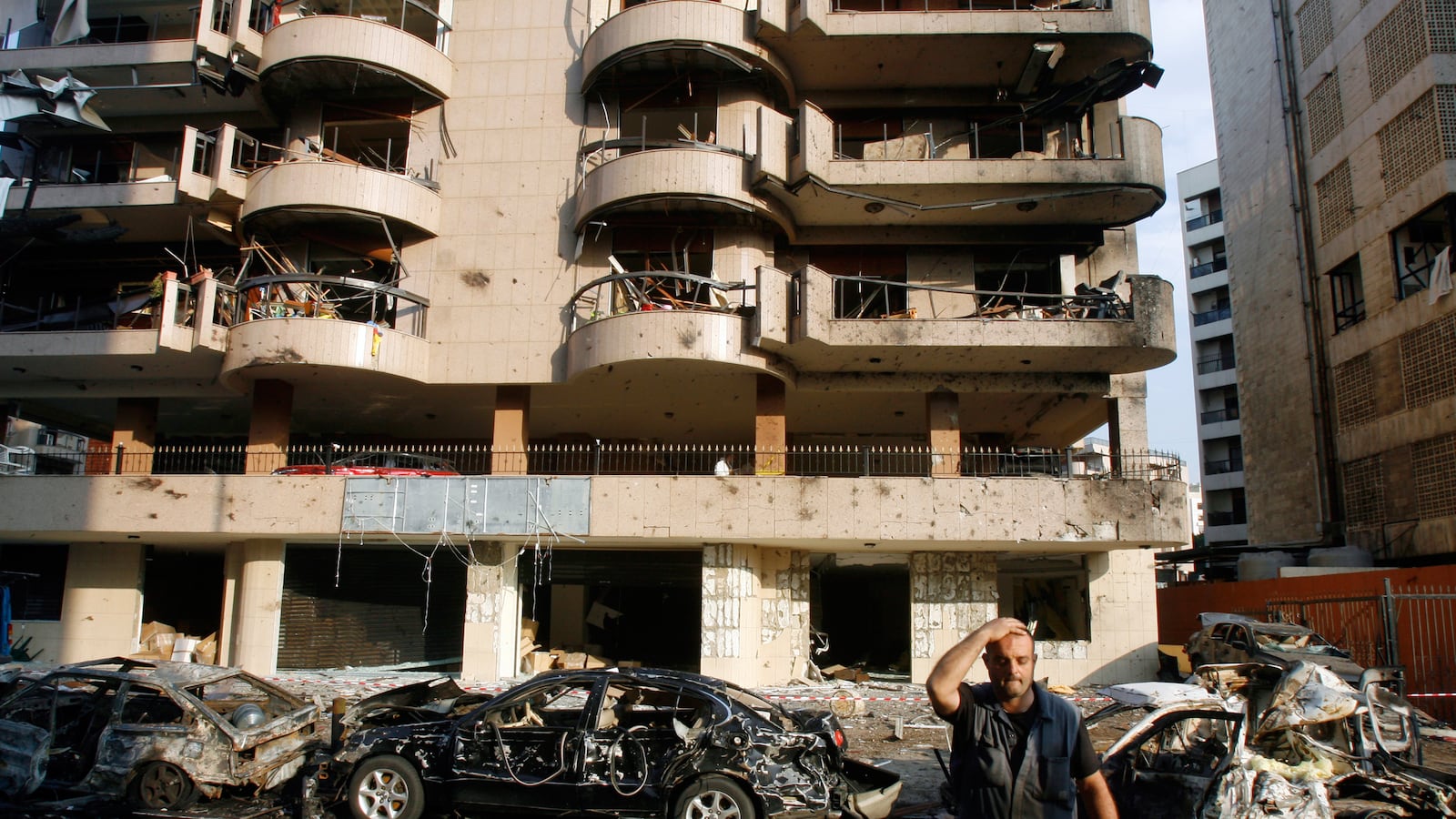A captured jihadist leader who masterminded attacks in Israel and Lebanon—most recently, the deadly November twin suicide bombings on the Iranian embassy in Beirut that left 30 people dead and 160 wounded—reportedly died in Lebanese custody this weekend, just a day after his identity was apparently confirmed through DNA testing.
The Lebanese military confirmed in a statement the “death of detainee Majid al-Majid this morning at the central military hospital after deterioration in his health.” He was known to have suffered from kidney disease but in the absence of a detailed medical picture speculation mounted in Beirut as to the circumstances of his death.
A Saudi national, al-Majid was arrested last month—some security sources say he was seized early in December, while others insist it was just after Christmas—and is being held by army intelligence in a secret location in Beirut, according to Lebanese defense minister Fayez Ghosn.
As the emir of the Abdullah Azzam Brigades, he was considered a high-value target and was one of the more significant al-Qaeda luminaries to have been seized in 2013. The U.S. and Saudi authorities also had him on their wanted lists. With his capture, Lebanese authorities may have hoped to counter future bombing attacks on Hezbollah strongholds in southern Beirut; the latest of those came on Thursday when five were killed and more than 60 injured.
The attacks on the Lebanese Shia movement Hezbollah, an ally of Syrian President Bashar al-Assad, have inflamed sectarian tensions and violence in Lebanon.
So far, the Abdullah Azzam Brigades—normally no slouch when it comes to propaganda—have refrained from issuing any statement about the claimed capture and death of their emir. The group was designated a terrorist organization by the U.S. in 2012 but was founded in 2004 in Saudi Arabia by Saleh al Qarawi, a onetime close associate of Al Qaeda’s leader in Iraq, Abu Musab al Zarqawi, who was killed in 2006 in a U.S. airstrike north of Baghdad.
It was al-Zarqawi who instructed al-Qarawi to set up a terror group to focus on the Levant and to name it after a Palestinian mentor of Osama bin Laden who recruited mujahedeen for the fight against the Soviets in Afghanistan in the 1980s. The group’s name was first used for attacks in Egypt in 2004 and 2005 but U.S. counter-terrorist officials believe that it was only fully fledged in 2009.
The U.S. designation came into effect a month before al-Qarawi was arrested by Saudi authorities when he returned to the Gulf kingdom to seek medical treatment for wounds he sustained in a drone strike in Pakistan’s Waziristan. Al-Majid succeeded him.
Lebanese security sources told the Reuters news agency that DNA samples taken from Majid’s cousins in Saudi matched the captured jihadist. They described him as one “the most dangerous wanted” men. Some sources say the emir was captured when he was being transferred for medical treatment between Beirut hospitals; al-Majid reportedly suffered from kidney disease.
In Lebanon, the Abdullah Azzam Brigades have been recruiting hardline Islamist militants, including some veterans from the Iraqi insurgency, Lebanese security sources told The Daily Beast last year. They claimed some of the group’s members have been based out of the Ein el-Hilweh Palestinian refugee camp, near Sidon, an accusation denied by Palestinian leaders who oversee Ein el-Hilweh. Local Lebanese newspapers yesterday claimed al-Majid had also been living in the camp.
The largest of a dozen camps in Lebanon for Palestinian refugees who fled the 1948 Arab-Israeli war, the one-kilometer square Ein el-Hilweh houses more than a 100,000 Palestinians—Palestinian Syrians have added to the overcrowding and compounded tensions in the camp. Hardcore Islamists have also added to radical elements that were already in the camp, claims Hisham Jaber, a former top strategist for the army and onetime military governor of Beirut.
Last year Jaber told The Daily Beast that jihadists affiliated with al-Qaeda were forming alliances with radical Sunni groups in Lebanon, infiltrating the country in a bid to use it as a base for global jihad and to recruit for the civil war in neighboring Syria.
Lebanese army sources say al-Majid had been a key figure in the jihadist upsurge in Lebanon, fueled by the Syrian civil war—one that has been stretching their resources and that they have been struggling to contain. Diplomats fear the al-Qaeda infiltration has been feeding off—and adding to—the destabilized sectarianism sparked by the conflict in Syria.
Jihadists have been present in Lebanon—and especially in the Palestinian camps—stretching back two decades. There was a rapid growth of Salafi jihadist groups in Lebanon following the U.S. invasion of Iraq, and with the tactical cooperation of Syrian military intelligence, hundreds of volunteers from the camps joined the Iraqi insurgency, gaining combat experience and forming ties to al-Qaeda.
The twin suicide attacks last November on the Iranian embassy were one of the biggest known operations of the Abdullah Azzam Brigades. Before the announcement of his death, Iran demanded full involvement in al-Majid’s interrogation. “Iran officially asked Lebanon to participate in the investigation with Majid al-Majid given that he is the one responsible for the Iranian Embassy bombings,” Iranian Ambassador Ghazanfar Ruknabadi told Lebanese television a few before al-Majid’s death.
And despite the fact that al-Majid was on Saudi’s terrorist wanted list, Hezbollah leader Sayyed Hasan Nasrallah accused Saudi intelligence of being behind the bombing of the Iranian embassy, alleging the brigades’ leadership is “directly linked to Saudi intelligence.”
The Saudi ambassador to Lebanon had indicated that Riyadh was goign to demand al-Majid's extradition but Lebanon’s foreign minister, Adnan Mansour, had said that Lebanon wanted to prosecute him for attacks on Lebanese soil.






